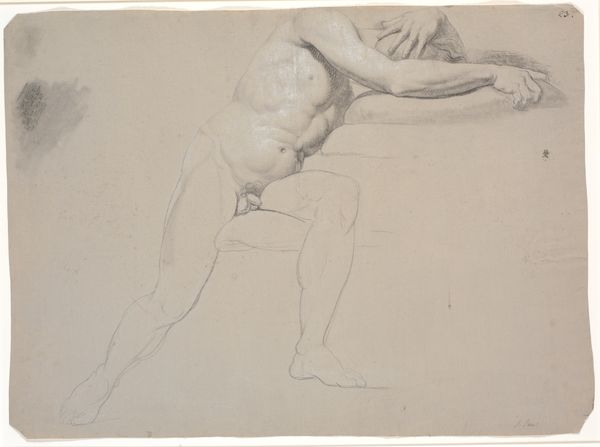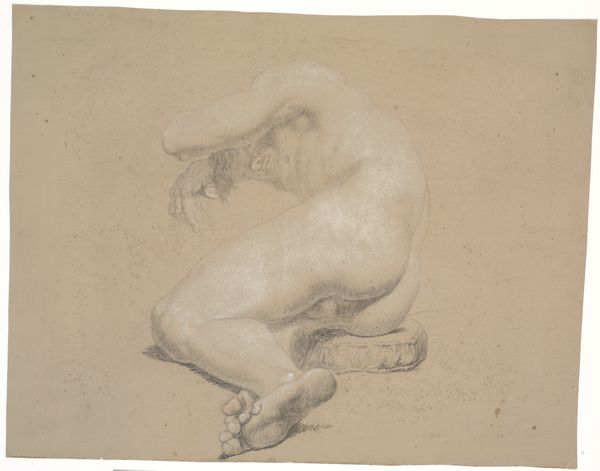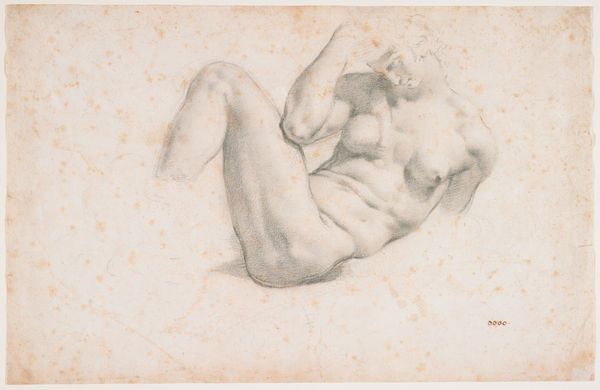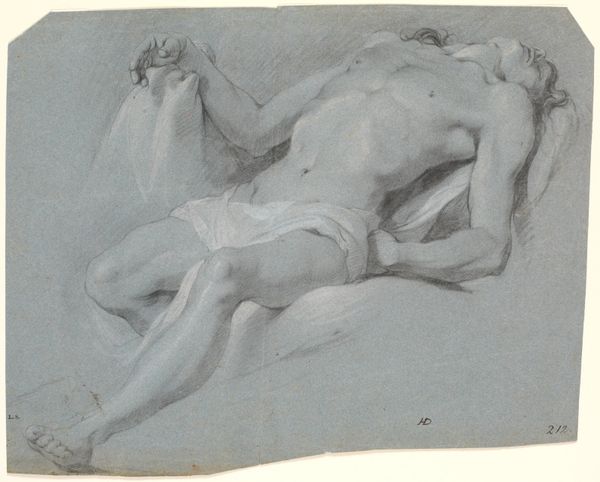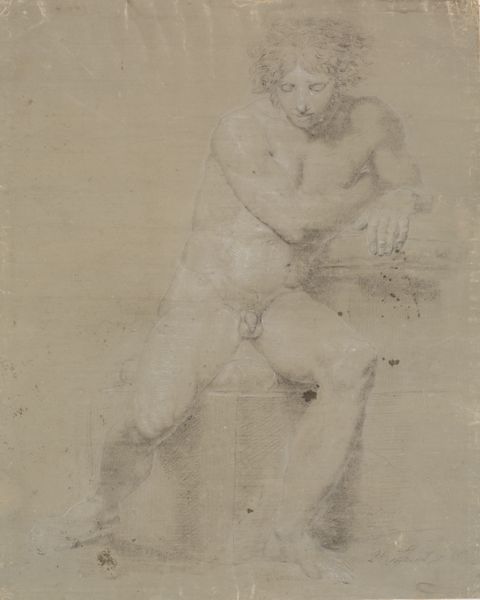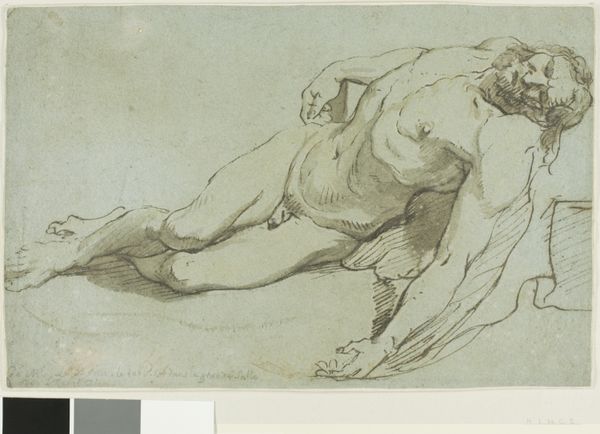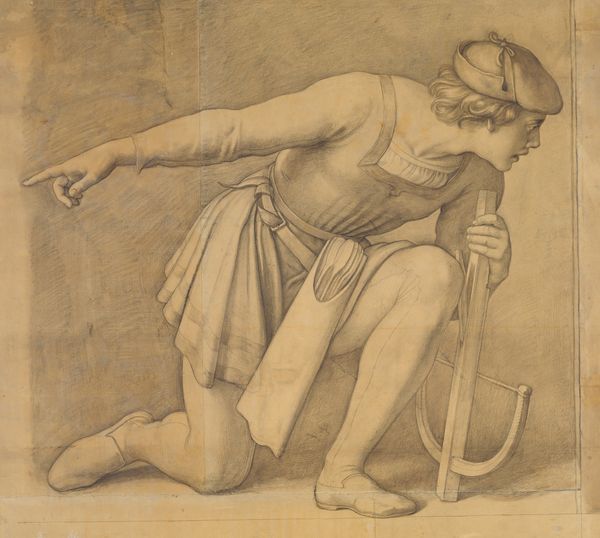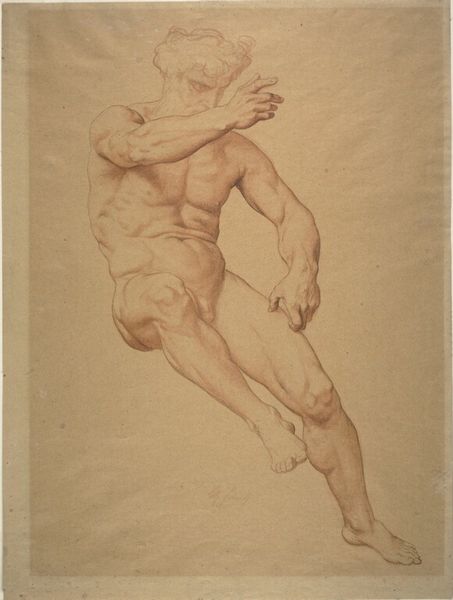
Siddende model på lav plint med pude. Armene krydset. Venstre ben bøjet, højre ben udstrakt 1778 - 1809
0:00
0:00
drawing, pencil, graphite
#
portrait
#
pencil drawn
#
drawing
#
pencil sketch
#
charcoal drawing
#
figuration
#
pencil drawing
#
pencil
#
graphite
#
academic-art
#
nude
#
realism
Dimensions: 435 mm (height) x 477 mm (width) (bladmaal)
Curator: Here we have a drawing titled "Siddende model på lav plint med pude. Armene krydset. Venstre ben bøjet, højre ben udstrakt"—"Seated Model on a Low Plinth with Cushion. Arms crossed. Left leg bent, right leg extended." It dates from between 1778 and 1809 and is housed here at the SMK. It is unsigned. Editor: The subdued lighting immediately sets a somber mood, doesn't it? And that very visible foot – quite pronounced for a study. Curator: Absolutely. The artist’s focus seems to be on capturing the human form with a remarkable degree of realism within the academic tradition. It depicts a nude male model, and we might consider the implications of depicting the male nude body during that time. Was it simply academic, or did it also hold some subtle political or societal critique? Editor: I am very drawn to the surface itself. It is a simple pencil and graphite on paper, yet that simplicity lends itself well to conveying the physicality of the subject. The artist utilizes hatching and cross-hatching to render form, and observe the weight of the sitter. It’s interesting how the work calls attention to both the final drawing and the artistic labour that went into producing the lines themselves. The labor to train your hand and your eye this well! Curator: Considering feminist perspectives, it prompts a discussion about the male gaze and the representation of the male body. This figure, though, almost lacks power, his gaze is pointed downward and his limbs appear tired. Is he resisting this gaze somehow? Or is the artist? Editor: That resistance or exhaustion is present, and I feel like the medium really conveys this well. What would this work look like in oil paints? Something is telling me the material matters here in terms of representing realness and everyday life, not an idealized symbol. Curator: Indeed, these discussions bring nuance to our understanding. Thank you for highlighting those material processes that are linked to societal implications. Editor: It allows us to rethink how meaning and representation are intertwined. Always glad to speak to production!
Comments
No comments
Be the first to comment and join the conversation on the ultimate creative platform.
